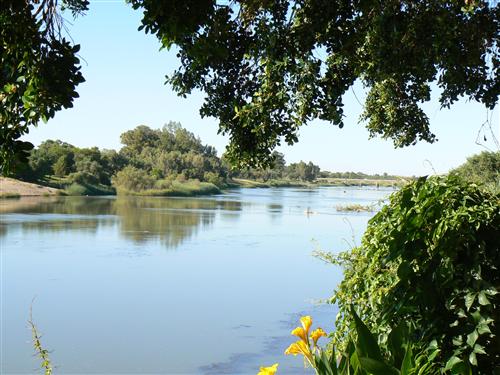Suspended sediment is characterised as the mass of suspended sediment per unit volume of water, in units of mg/L, and is commonly expressed as TSS (Total Suspended Sediment). Particles suspended within the water column are usually less than 0,1 mm in diameter, and are mostly silt- and clay-sized particles. These particles are transported by flowing water, and settle out when flow is insufficient to keep them in suspension. Concentrations of suspended sediment generally increase during periods of increasing flow from rainfall, reach a maximum at or near the peak of a storm hydrograph, and decrease relatively rapidly with the hydrograph recession limb.

The Orange River, near Upington, South Africa; a region impacted by water quality issues such as suspended sediments from upstream sources.
Source:Kruchem 2008
( click to enlarge )
